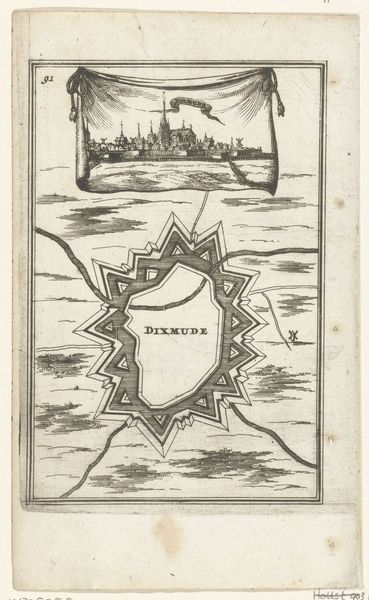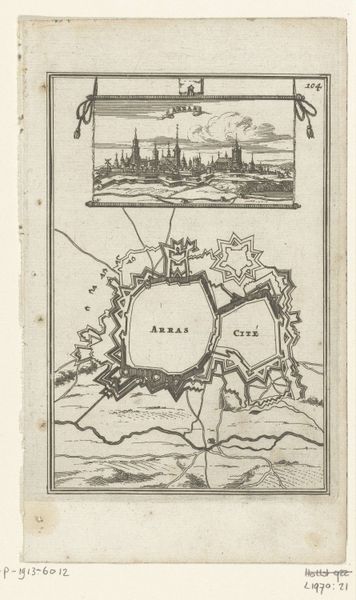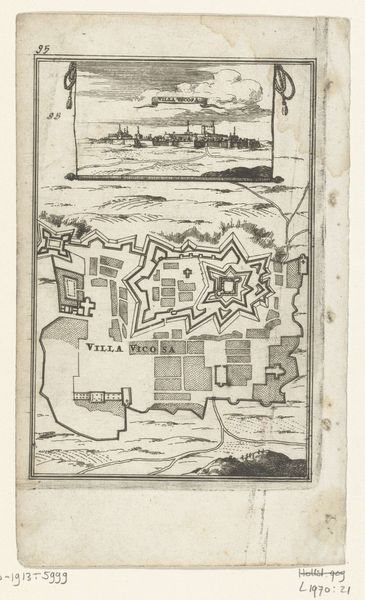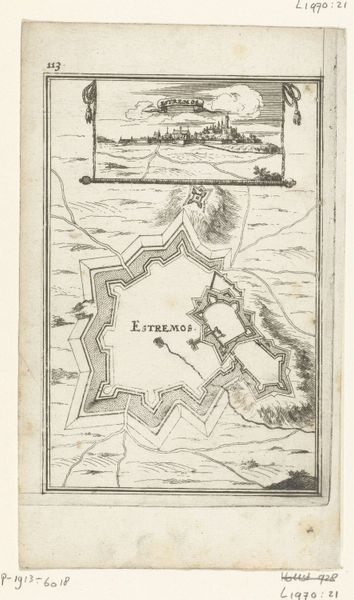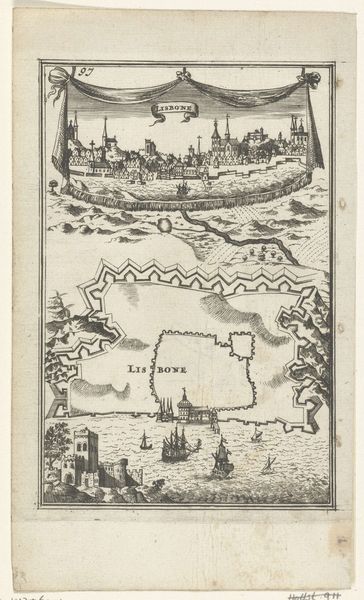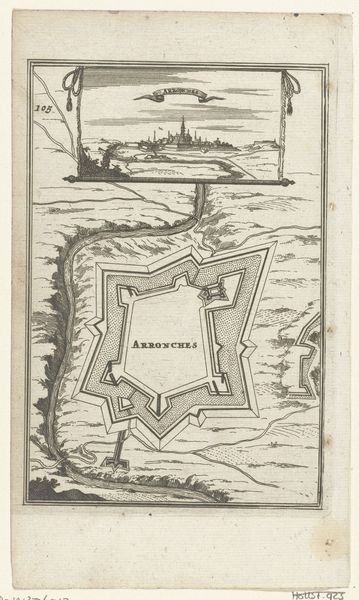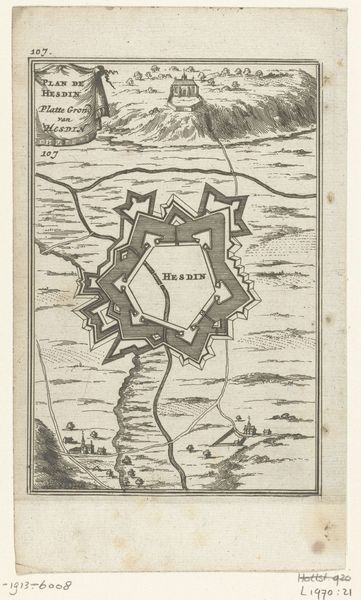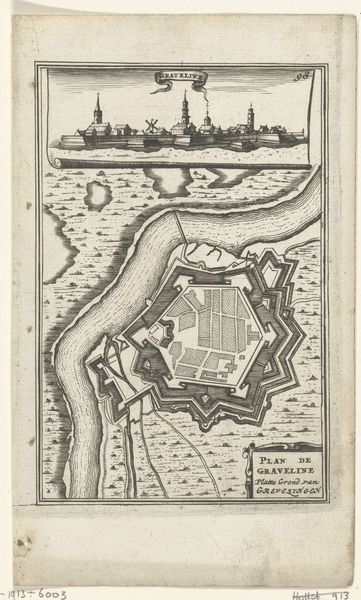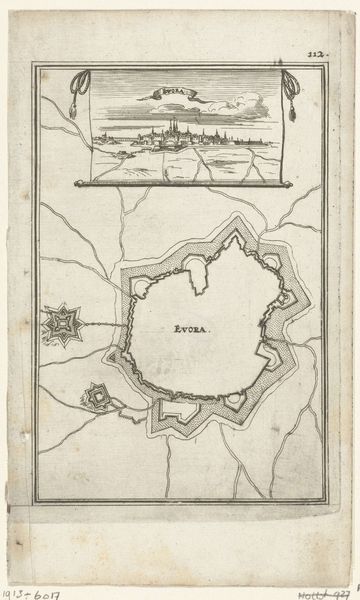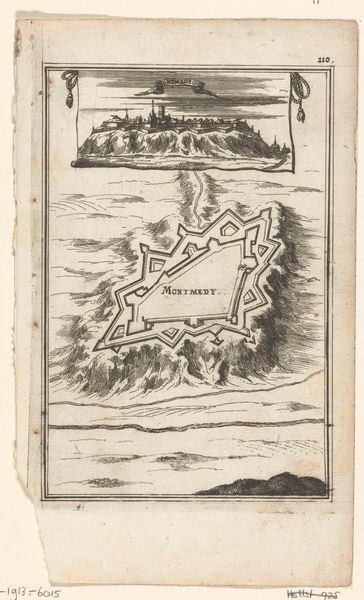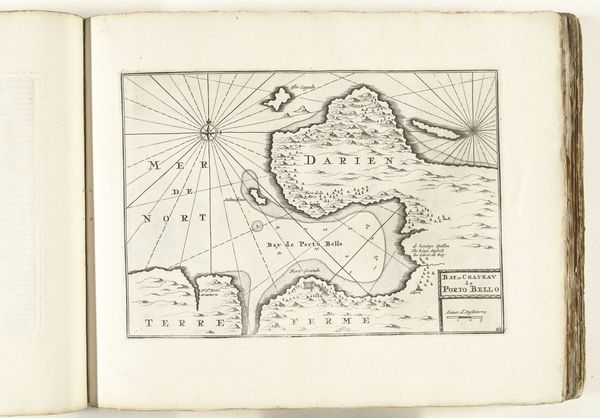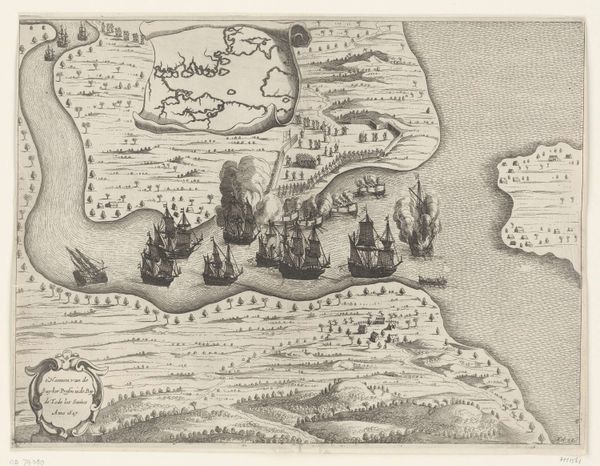
Illustratie voor 'Den Arbeid van Mars' van Allain Manesson Mallet 1672
0:00
0:00
drawing, print, ink, engraving
#
drawing
#
baroque
# print
#
old engraving style
#
river
#
ink
#
pen-ink sketch
#
cityscape
#
engraving
Dimensions: height 185 mm, width 111 mm
Copyright: Rijks Museum: Open Domain
This illustration of Béthune was made by Romeyn de Hooghe, likely in the late 17th century, using engraving techniques. The process involves meticulously incising lines onto a metal plate, inking it, and then pressing paper against the plate to transfer the image. Notice how the crisp, precise lines define the town's fortifications and layout. The material quality of the print, its fine lines and graphic clarity, speaks to the labor-intensive process of engraving, requiring great skill. De Hooghe, a prolific printmaker, was part of a workshop culture with specialized labor. Prints like these were crucial for disseminating information about military engineering, which involved not only complex architectural planning but also considerable human labor for excavation and construction. The level of detail suggests a desire to capture and communicate the strategic importance of such sites in an era defined by constant warfare. It reminds us that images are products of labor, skill, and systems of knowledge.
Comments
No comments
Be the first to comment and join the conversation on the ultimate creative platform.
